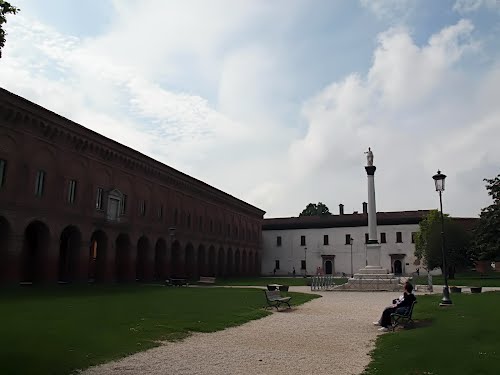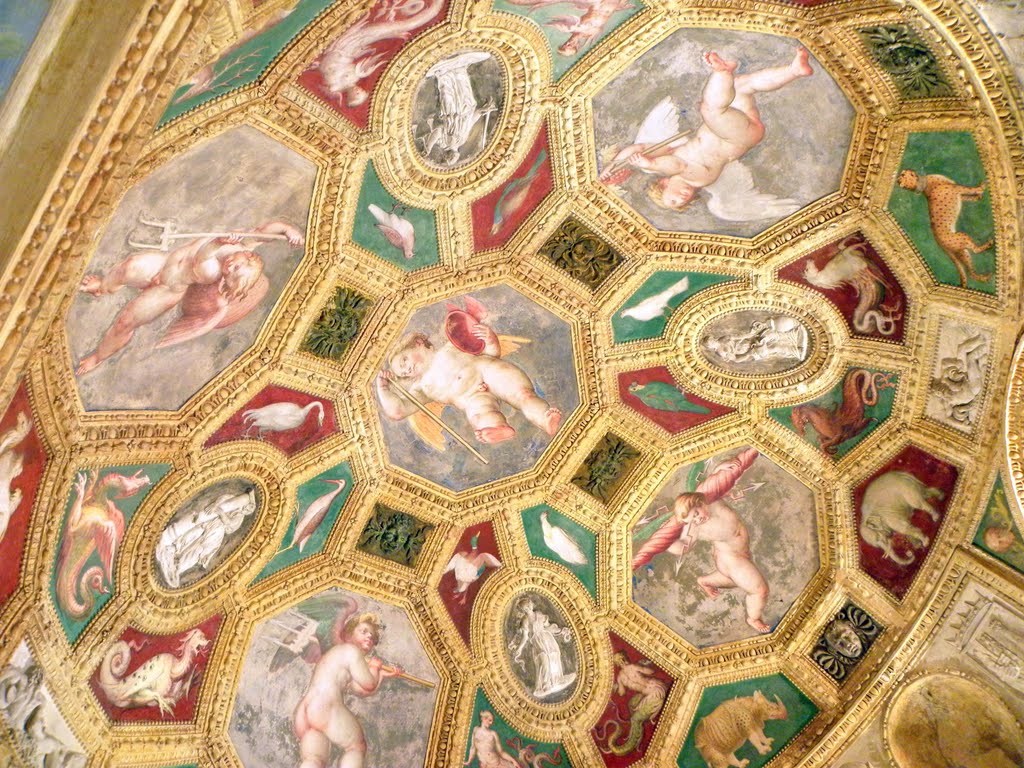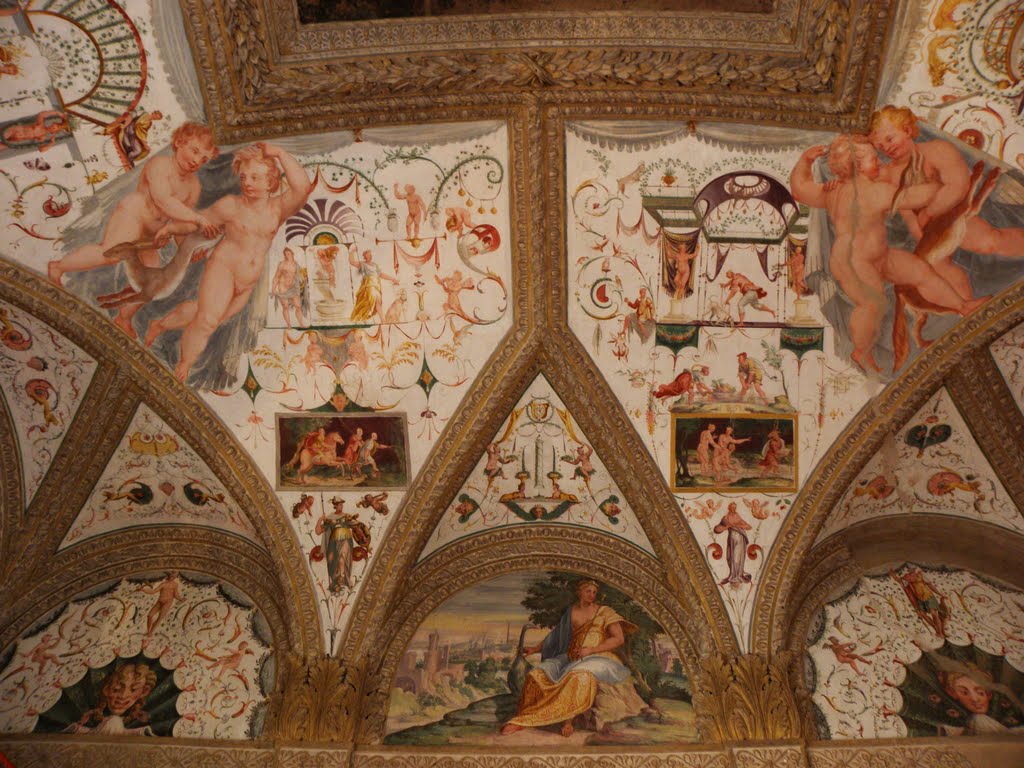
Palazzo Giardino
This post is also available in:
 Italiano (Italian)
Italiano (Italian)
Palazzo Giardino, known as the “Casino” (“the hut”), is a small, rustic-looking building, which is now a historical museum. It was built in 1580 and finished in 1588, as the private residence for Duke Vespasiano Gonzaga Colonna, who often retired there to read, study and find relief from government commitments.
The facade is plastered in white, contrasting with the oak cornice. In 1588, the Duke had the exterior painted with fake marble geometric patterns. The interior was embellished by the artists coordinated by Bernardino Campi, between 1582 and 1587, following a decorative trend based on Vespasiano’s vast literary culture.
A marble staircase leads to the main floor and to “Camerino dei Cesari”: at the bottom of the wall in this room, a Triumphant Rome with a winged Victory emblem is still visible while Fame decorates one side of the window. Six emperors are depicted along the side walls.
Equally frescoed with mythological and historical figures and tales, are the following rooms: the Chamber of Philemon and Bauci, the Chamber of Myths, “Sala degli Specchi”, decorated with Venetian glass mirrors and bas-reliefs with scenes of Roman life and great landscapes, “Camerino delle Grazie”, with grotesquely painted walls depicting mythological figures (Apollo, the three Graces, Diana Ephesine, Venus with Cupid, sphinxes, cherubs, and satyrs), birds and flowers.
On the side, a small spiral staircase, with an ivy-weaved pattern on the walls, leads to another private dressing room dedicated to Venus.
The garden
Only the three niched caves remain of the original Italian garden, which is accessed through the Hall of Mirrors. Inside the central cave, there’s a small shell basin made of marble.
Originally, there was a parterre delimited by two intersecting avenues, with a fountain, and a wooden temple with a copperclad dome.
The flowerbeds were bordered by low box hedges (Buxus sempervirens) and along the avenues, in 1590, the Duke planted some column-like oaks (Quercus petraea) interspersed with trellis structures thick with vine shoots (Vitis spp.), and fragrant jasmine (Jasminum spp.).
In the niches, there were ancient sculptures. During the XVII century, the garden was transformed into a vegetable growing facility, and its many structures were dismantled.
This post is also available in:
 Italiano (Italian)
Italiano (Italian)
Contatti
Piazza d'Armi 1 - Sabbioneta(MN)
0375 221044
iat@sabbioneta.org
Altre info
Cumulativo: euro 12,00 (Palazzo Giardino + Galleria, Teatro all`Antica, Palazzo Ducale, Sinagoga); bambini: da 0 a 12 anni ( in famiglia ) gratuito; ragazzi: da 13 a 18 anni euro 5,00; scuole: euro 5,00; comitive (minimo 20 persone): euro 8,50; over 65 euro 10,00; singolo monumento: euro 5,00.
Tutto l'anno
Da aprile a ottobre: feriali: 9.30 - 13.00 e 14.30 - 18.30. Sabato e festivi: 9.30 - 13.00 e 14.30 - 19.00. La biglietteria chiude mezz`ora prima. Da novembre a marzo: feriali: 9.30 - 13.00 e 14.30 - 17.00. Sabato e festivi: 9.30 - 13.00 e 14.30 - 18.00. Lunedì chiuso (salvo festivi).



